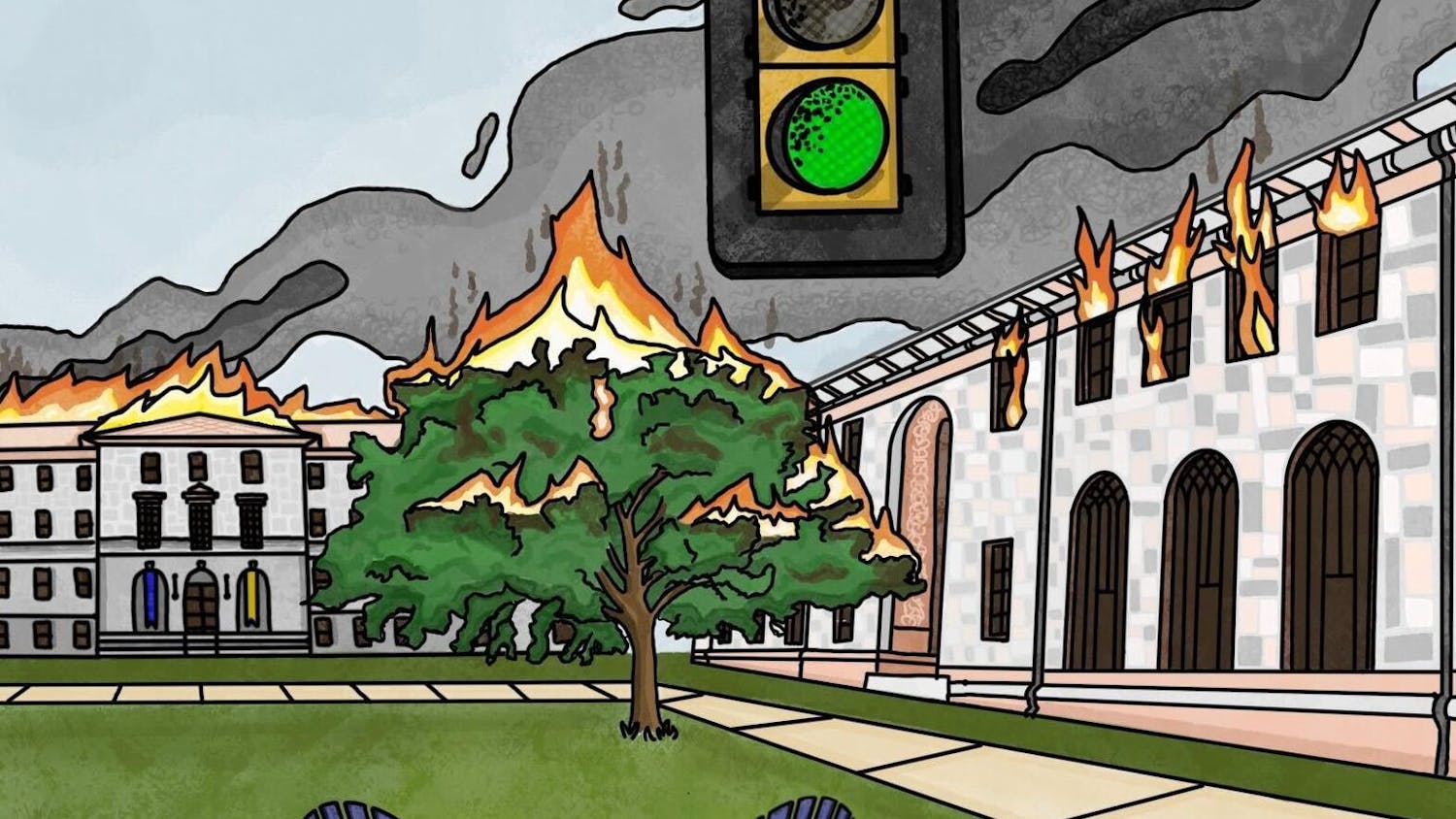There is a clear distinction between death and dying. Yet in a headline that went viral in 2016, “Obituary: Great Barrier Reef (25 Million BC-...),” author Rowan Jacobsen inaccurately conflated the two in a dramatic obituary. By framing the story as a death, the piece served as a brief public record of the reef’s long life, a container for feelings of loss and grief. If you did not know any better, you would assume that this was the end of the Great Barrier Reef.
Contrary to the article’s bold title, National Geographic cites that half of the Great Barrier Reef is still alive, with a hopeful future. However, Jacobsen prematurely consigned it to a burial with no return, saying: “The Great Barrier Reef of Australia passed away in … after a long illness. It was 25 million years old.”

Employing doomsday fear to promote environmental action is problematic—it excuses any lack of empathy for the world’s climate crisis. If the media only emphasizes apocalyptic claims that we are bound to breach the warming threshold in the next five years or argues that the Earth is dead and even hosts a funeral for it, what incentives would people have to change their ways? This thought has nagged me ever since I read that obituary in an environmental science class as a first-year. Since then, I have considered multiple methods to promote change in a way that does not use fear mongering.
One way is to shift our gaze to environmental “bright spots,” which seek out the positive, optimistic moments when times are bleak. These bright spots, centered around scientific innovations and public policies, aim to mitigate anthropogenic climate change and can begin to alleviate climate anxiety, even fostering hope and creativity. Stumbling across an article about the surprising resurgence of sea life that emerged along the coast of Long Island, New York in mid-September reminded me that the fight was far from over.
Caught on camera by photographer Sutton Lynch’s drone, the footage revealed that the waters are brimming with a multitude of creatures: whales, sharks, seals and dolphins that are all rare to see in person. The article attributes this incredible recovery to catch limits set on menhaden, a keystone species, which has been catastrophically overfished in the Atlantic Ocean for decades.
A 2012 limit imposed by the Atlantic States Marine Fisheries Commission enabled a remarkable resurgence in fish populations, gradually rejuvenating the presence of larger marine creatures along the coast of Long Island.
“It’s very rare that you have a conservation gain that is so visible in such a short time,” conservationist John Gans said.
Cold, desolate seas have become large schools of menhaden and pods of humpback whales and dolphins. This concrete proof serves as a testament to intentional human intervention. The story was all the more powerful because Long Island has been especially susceptible to global warming due to the rising sea levels, with intensifying storms and an increase in algal blooms. It is also noteworthy that the inspiring resurgence of sea creatures found a captive following on Lynch’s Instagram. Instead of focusing on oceans suffocating under the weight of plastics or devastating coral bleaching events, a heart-warming story about a young man, his camera and the revitalization of species brought me immense joy.
With a renewed sense of purpose, I resolve not to attend any more premature “funerals” for our planet. This means actively seeking out alternative sources of news such as environmental newsletters and blogs by writers like Ed Yong, author of “An Immense World: How Animal Senses Reveal the Hidden Realms Around Us” (2022), that refuse to wallow in doomsday gloom and instead focus on the wonders of nature and our social world. Climate and environmental newsletters and podcasts on Substack also offer new perspectives on winning the climate battle in creative ways. For those who enjoy listening to environmental science podcasts, programs like “Outrage + Optimism,” co-hosted by Christiana Figueres and Tom Rivett-Carnac, offer a generative debate.
To promote optimism and make environmental changes on Emory University’s campus, there are plenty of opportunities to volunteer as a Zero Waste Ambassador, rally at climate strikes for structural change or join a wide variety of environmental clubs. You are never too small to make waves.
Natalia Freeze (25C) is from Boston.








